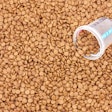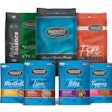
Fundamental changes in the way information is conveyed to the consumer are on the horizon as the Association of American Feed Control Officials (AAFCO) finalizes its Pet Food Labeling Modernization efforts. While deliberations on some details are ongoing, anticipated changes include a "Pet Nutrition Facts Box" to replace the guaranteed analysis and calorie content statement, a front-of-pack nutritional adequacy designation and the addition of safe handling text and graphics. When the rules eventually go into effect, all pet food manufacturers will need to face comprehensive label revisions. However, this is not the first time the industry has had to accommodate sizable regulatory challenges. Reflecting on a few of the more notable regulatory milestones may offer some insight as to what's ahead.
Nutritional adequacy
Implementation of the AAFCO Dog and Cat Food Nutrient Profiles was a monumental change to the way the nutritional adequacy of products was substantiated and declared on the label. For many years previously, products represented to be complete and balanced but not feeding trial tested had to "meet or exceed National Research Council (NRC) recommendations.” Unfortunately, the means by which nutrient requirements were expressed by NRC changed in its 1980s publications. Because recommendation in those versions were based on the assumption of 100% bioavailability, something that simply can't be achieved in practical formulations, the NRC became unsuitable as the standard upon which to judge the adequacy of commercial pet foods.
To address this problem, AAFCO convened a panel of experts from academia and industry in the early 1990s. The result of the panel's deliberation was a new set of nutritional requirements for dog foods that included allowances for anticipated differences in bioavailability of nutrients in commonly used ingredients. A similar set of requirements for cat foods soon followed. In addition to a necessary revision to the label statement, many manufacturers also had to reformulate products to meet these new requirements.
Although some of the values for nutrients have changed over the years to reflect advances in nutritional knowledge, and notwithstanding the fact that recommendations to account for expected differences in bioavailability now appear in the latest (2006) NRC publication, the AAFCO Dog and Cat Food Nutrient Profiles remain the standard to which the nutritional adequacy of pet foods are held in the U.S.
Additives
Significant consumer concerns regarding the safety of the preservative ethoxyquin, particularly in dog foods, resulted in intense investigation in the 1990s. Ultimately, the U.S. Food and Drug Administration (FDA) found little evidence that the wide array of adverse effects reported could be attributed to the additive. While FDA did recommend lower inclusion rates to mitigate the mild and reversible effects seen in research dogs consuming the very highest amounts of ethoxyquin, the agency did not move to amend the federal regulation or otherwise take formal action to prohibit or even lower the maximum amount allowed in pet foods.
Despite FDA's lack of action, persistent consumer pressure eventually convinced most pet food manufacturers to reformulate their products to exclude ethoxyquin. Still, low levels of ethoxyquin in some pet foods persisted, predominately due to its continued inclusion in ingredients such as fish meals. In fact, at the time U.S. Coast Guard regulations mandated that ethoxyquin be added to all fish meals transported by ship to mitigate the risk of spontaneous combustion in cargo holds.
FDA did not consider low levels of ethoxyquin to be a safety issue per se, but the failure to declare the presence of ethoxyquin on the label, regardless of level or source, was deemed to be false and misleading. A letter to that effect was issued by FDA in the late 2000s. Subsequently, suitable alternative preservatives were found, and the Coast Guard regulations were amended.
Propylene glycol was once widely used in appreciable quantities as a humectant in soft-moist pet foods. Unlike ethoxyquin, there were never any consumer-reported issues with its use. However, on the basis of research in the 1990s showing a direct negative impact on red blood cell half-life in cats, actions were taken by FDA to expressly prohibit by regulation any further inclusion in cat foods. Manufacturers had to move quickly to find suitable alternatives if soft-moist cat foods were to remain viable on the market. Although this move by FDA only applied to cat foods, use of propylene glycol in soft-moist dog foods has waned over time as well.
Calories
FDA regulations promulgated under the Nutrition Labeling and Education Act of 1990 (NLEA) helped bring order to the labels of foods for human consumption that bore terms such as "lite" and "low fat." Prior to that, manufacturers set their own criteria, which often led to potentially misleading claims; e.g., one company's "low calorie" food item could actually be more calorie-dense than another's "regular" food. AAFCO soon followed FDA's lead by establishing similar regulations for "descriptive terms" on dog and cat food labels. Many pet food companies had to reformulate and/or relabel products as a result.
Historically, statements of calorie content on pet food labels were not permitted at all, because there was no direct analytical method to measure metabolizable energy (which is generally necessary for the purpose of declaring guarantees). However, the new regulations necessitated development of means to quantify and declare calories on the label separate and distinct from the guaranteed analysis.
At first the calorie content statement was only required on "low" or "less calorie"-type products. Although voluntarily allowed on other pet product labels, in practice it was seldom employed by the industry. In 2005 the American College of Veterinary Nutrition proposed that calorie content statements be mandatory on all dog and cat food labels. After extensive deliberation, AAFCO regulations to implement this broader application were enacted in 2014.
Supplements
The passage of the Dietary Supplement Health and Education Act of 1994 (DSHEA) fundamentally changed how FDA could regulate dietary supplements for human consumption, as the new law provided for both the use of ingredients that normally would not be allowed in foods in conventional form as well as for label claims that would otherwise render a food product to be a "drug." Not surprisingly, the supplement industry flourished as a result, and notwithstanding FDA's formal notice in 1996 that DSHEA did not apply to animal products, that category grew substantially as well. This caused a great conundrum for both the industry and regulators, as many supplement products for animals simply could not fit within the AAFCO rubric.
Eventually, an amenable albeit tenuous solution was reached through the efforts of the National Animal Supplement Council (NASC). Animal supplements that supply only AAFCO-acceptable ingredients (e.g., vitamins, minerals, fatty acids) remain squarely within AAFCO's purview. For those that include ingredients that are not approved for use in feeds (e.g., herbs, metabolites), NASC developed a novel scheme for labeling of "dosage-form animal health products" that more closely emulated the labeling as required by DSHEA. Regulatory concerns regarding safe use of products containing unapproved ingredients were placated by NASC's commitments to self-regulate through mandatory audits of its members and implementation of an adverse effect reporting system.
Makers of these products must abide by conditions set by FDA and states that enforce "animal remedy" laws as "unapproved drugs of low regulatory priority." However, for the most part these products escape the scrutiny of state feed control officials, because as labeled they are no longer "feeds" per se. As viewed by the typical purchaser of animal supplements, though, the distinction between products subject to the feed regulations and those that are not may not be readily apparent.
More regulatory insights from David Dzanis


















